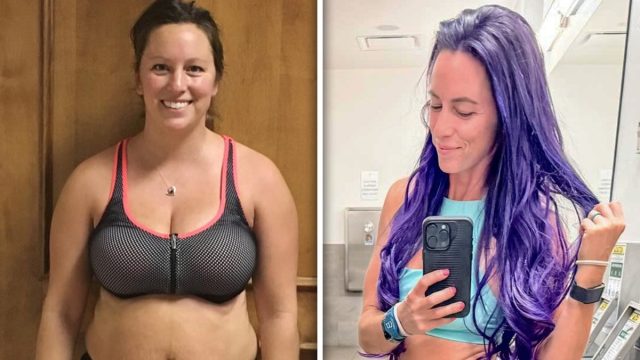She Lost 70 Pounds When She Learned This One Post-Workout Trick

Are you struggling to lose weight and body fat? Try this one trick that an expert swears by. Kathryn Dakota Kaiser is a weight loss and fitness coach who abides by the 7×7 method. She reveals a secret trick in a new social media post that helped her slim down fast. "I lost 20% body fat after I learned this post-workout trick," she writes. I went from 38% body fat and 188 pounds to 18% body fat and down 70 pounds," she writes.
It's Hard Not Reaching Your Goals
"Do you know what's worse than having goals and not having time to reach them? Having goals, deciding to make the time, putting in all the hard work, and you see no change for a month or more," she says in her post.
RELATED: 10 Foods to Avoid If You're Trying to Burn Fat, Says Expert
You Might Start to Make Excuses
"You resort to thinking 'maybe my body just doesn't like to lose weight;… 'I might have to try that weight loss pill My friend was talking about after all'…. 'I might have to sign up for that {insert diet name} program I heard about even though I promised myself I would do this naturally with no prepackaged food plans,'" she continues.
It Can Be Defeating.
"Defeat, frustration, overwhelm all kicks in… You also wonder what's the point if I have to work so hard at the gym and hardly eat if it doesn't work anyway," she says. "But there's a key thing you are missing when it comes to nutrition and your workouts."
Food Is Made Up of Three Macros
She points out that "all food is made up of three macros" – protein, carbs, and fat. "Each macro has a purpose when it comes to burning fat and losing weight," she says.
Protein
She starts with protein. She explains that it "helps build muscle to gain metabolic flexibility so you can burn fat faster even while eating pizza on a Friday."
RELATED: 8 High-Protein Foods with Nearly Zero Calories That Melt Fat
Carbs
Next up are carbs. They "act as an energy source and help control metabolism (you need them to build muscle to boost fat)" she writes.
Fats
The third macro is fat. "If you are an endomorph or mesomorph body type, higher fats can help boost fat burn during your fat loss cycle," she writes.
Your Body Needs Protein and Carbs to Build Muscle
"Now that you understand the three macros and how they all fit together for the purpose of gaining metabolic flexibility so your body burns fat faster," she says, adding that protein and carbs are "both are necessary to build muscle so your body can burn fat faster and you can get metabolic flexibility."
When You Eat Them Matters
"Paying attention to when you eat protein and carbs around your workout is important for making your metabolism flexible. Right after your workout is when your body is ready to build muscle fastest. If you don't fuel your body properly, your workouts have zero purpose," she says.
RELATED: 12-3-30 Walking Method: 20 Proven Tips to Lose Weight Faster
You Should Have Them Immediately After Your Workout and Also an Hour Later
"Immediately after you workout: 1 scoop whey protein in water (25-30g protein), then within 1 hr after you workout: 30g protein (= to a palm size of protein like chicken breast, ground beef or salmon that fits in your palm), pair with 50-75g carbs: 1 cup of cooked carbs or 2 cups of fruit (like 1 cup sweet potato, 1 cup cooked rice, 2 cups berries or read labels and have toast, etc), add veggies and less fat at this meal and your body will finally start building muscle and burning fat faster than ever before," she says. And if you enjoyed this article, don't miss 12-3-30 Walking Method: 20 Proven Tips to Lose Weight Faster.




